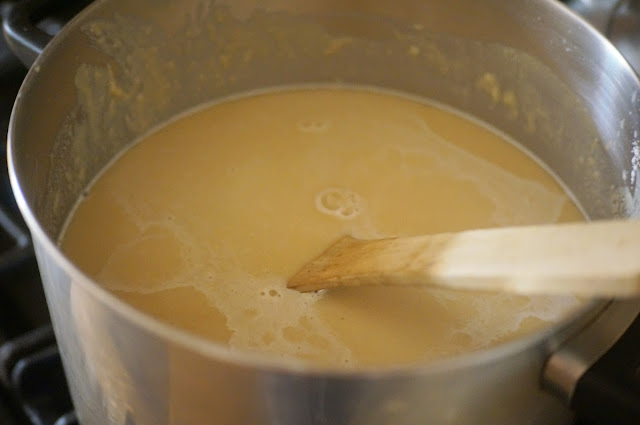Homemade Gochujang (고추장)
During quarantine, my aunt in Korea mailed us a package with all of the ingredients to make Korean hot pepper paste, a.k.a. gochujang. She sent it along with a little recipe pamphlet and my sister and I spent an evening stirring together a cauldron of burgundy goop.The process was fun and the resultant sauce was actually really delicious. Not so profoundly better than the premade stuff (and frankly, a lot of these ingredients are pretty processed already so this isn't the same as grinding your own wheat to make bread) but it was yummy enough to be worthwhile.
Now, I'm not including an ingredient list, nor am I instructing how to make this stuff; I'm just sharing some photos. However, I am sharing a photo of the recipe instructions and I've done a wee bit of translating so if you're keen and you have a way to procure the various bits and bobs that you need, you can go for it. My biggest suggestion though would be to have your aunt in Korea send you the ingredients; that worked best for me.
The recipe placard explains that you first need to prepare a large pot and a paddle for stirring. Next, add the sweet rice soaking water and one liter of fresh water in the pot with fermented soybean powder and barley powder and bring to a boil. Once boiling, continue boiling for two to three minutes (the reason for bringing to a boil is to allow the rice syrup to dissolve more easily). Then, turn off the heat and add rice syrup and stir well. After the mixture has cooled slightly, add the hot pepper powder and stir vigorously. Allow the mixture to cool completely and then place in a container and store in a kimchi fridge. The gochujang can be eaten immediately, because the sweet rice soaking water has already been fermented.
The recipe placard explains that you first need to prepare a large pot and a paddle for stirring. Next, add the sweet rice soaking water and one liter of fresh water in the pot with fermented soybean powder and barley powder and bring to a boil. Once boiling, continue boiling for two to three minutes (the reason for bringing to a boil is to allow the rice syrup to dissolve more easily). Then, turn off the heat and add rice syrup and stir well. After the mixture has cooled slightly, add the hot pepper powder and stir vigorously. Allow the mixture to cool completely and then place in a container and store in a kimchi fridge. The gochujang can be eaten immediately, because the sweet rice soaking water has already been fermented.
There are also two tips below. The first mentions that the sweet rice soaking water already has been salted so the gochujang should be properly seasoned with just these ingredients. It also says that if the gochujang is exposed to moisture, it will have a tendency to grow mold/yeast (a light-colored, thin, filmy deposit that is non-toxic) so avoid using spoons that are wet to scoop up the sauce.
My own tip: if you do see any white mold or yeast growth on top, you can just scrape it off. This is a common occurrence in fermented foods and is not harmful. Black mold is a different story.

My papa dug up this old hangari (medium-sized earthenware crock) that my mom used to use for gochujang before it was readily available in the Asian grocery stores. I washed this and dried it well overnight to make sure it was devoid of moisture before storing the gochujang.
The inaugural dish I made with the homemade gochujang was ddukbokki. It was delicious.

My papa dug up this old hangari (medium-sized earthenware crock) that my mom used to use for gochujang before it was readily available in the Asian grocery stores. I washed this and dried it well overnight to make sure it was devoid of moisture before storing the gochujang.
The inaugural dish I made with the homemade gochujang was ddukbokki. It was delicious.
xoxo.




























Comments
Post a Comment
I'd love to hear what you have to say!